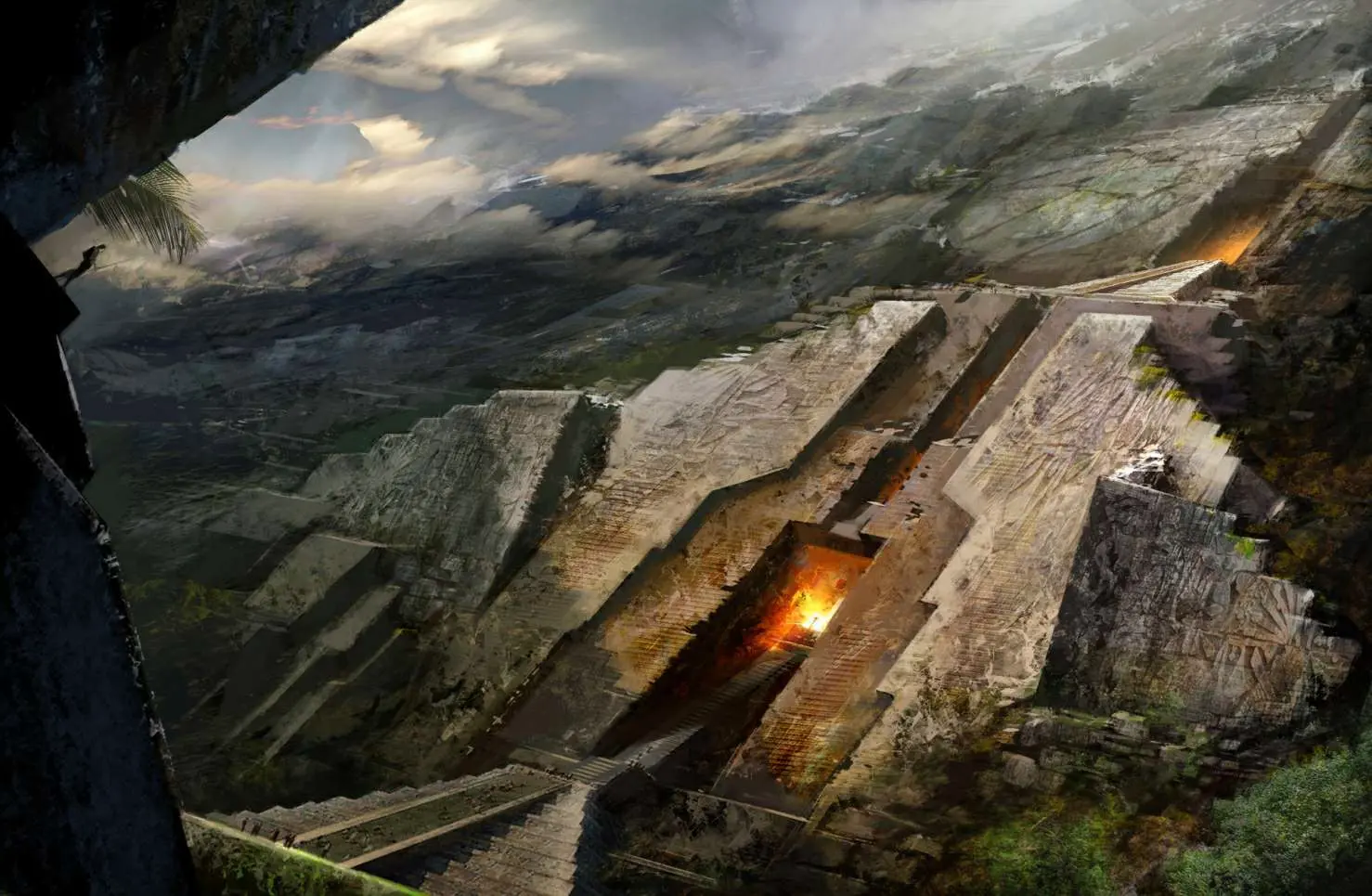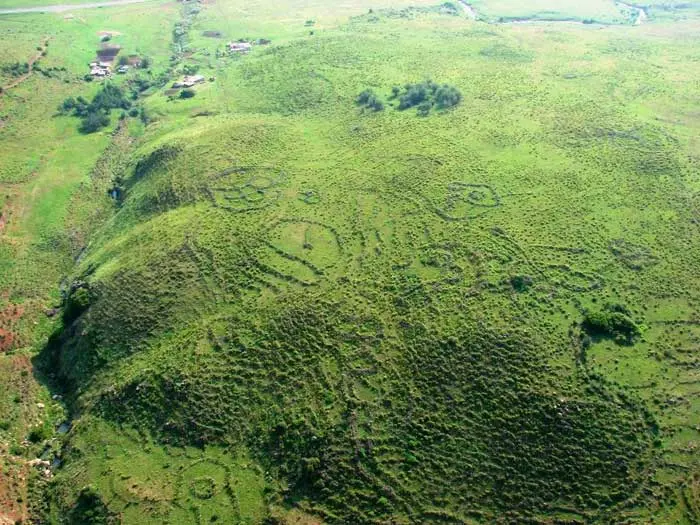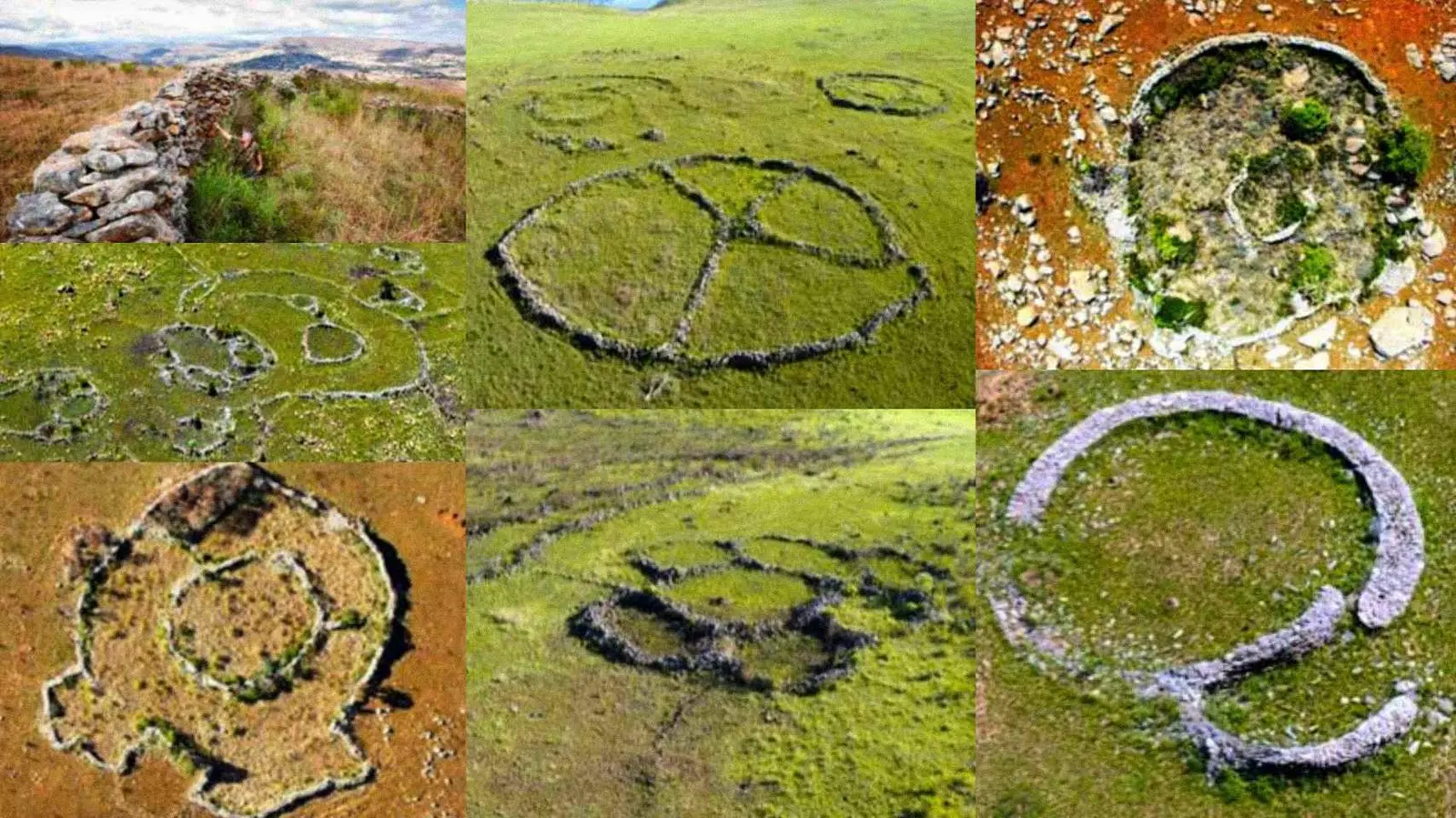Africa’s Pre-Flood City: Anunnaki’s 200,000-Year Echo
Ancient history is always an intriguing part of our history. People are always curious to know how civilizations lived hundreds of years ago. As we discover more about our past, we become more eager to uncover the mysteries of civilizations that are not mentioned in our history books.

The 200,000-year-old African city before the flood.
Fortunately, those interested in human history will be delighted to learn of a surprising discovery made in South Africa, about 150 km west of the port of Maputo. This discovery reveals the remains of a vast metropolis covering approximately 1,500 square kilometres.
The discovery that changes everything
What’s even more interesting is that researchers believe the city was built between 160,000 and 200,000 BC as part of an even larger community that covered around 10,000 square kilometers. Although this region is somewhat remote, local farmers had previously encountered the circular structures of the ancient metropolis. However, no one had ever tried to find out who made them or how old they were.
That changed when researcher Michael Tellinger teamed up with local firefighter and pilot Johan Heine to learn more about these structures. Observing them from above, Michael immediately realized that their significance had been underestimated.

Local residents have encountered these magnificent stone circles countless times.
“When Johan first introduced me to the stone ruins of Southern Africa, I never imagined the incredible discoveries we would make in the years to come. The photographs, artifacts and evidence we have accumulated point to a lost civilization that predates all others by many thousands of years,” explained Michael Tellinger.
Tellinger believes this discovery is so important that it could completely change the way we view our history.
The golden city of the Anunnaki
Another intriguing fact is that the city is surrounded by several gold mines. Therefore, researchers suggest that the vanished civilization might have lived there to mine gold. This, along with other evidence, points to the ancient Anunnaki:

Sculpted images from the Anunnaki period.
According to writer and pseudoscientist Sitchin, the chronology of the arrival of the Anunnaki on Earth is as follows:
- 450,000 BC: Due to prolonged wars, Nibiru’s atmosphere began to deteriorate, becoming inhospitable. Researchers believe that gold nanoparticles can repair a damaged ozone layer, which is why the Anunnaki sought out gold to repair their atmosphere.
- 445,000 BC : The Anunnaki land on Earth and settle in Eridu to mine gold in the Persian Gulf. Their leader was Enki, son of Anu.
- 416,000 BC : When gold production declined, Anu came to Earth with his other son, Enlil. Anu decided that mining should be done in Africa and put Enlil in charge of the mission.
- 400,000 BC : There were seven developed nations in southern Mesopotamia, including “Sipar”, “Nippur” and “Shuruppak”. After refining the metal, a spacecraft sent it into orbit from Africa.
The ancient South African city is made up of stone circles, most of which have been buried in sand. They can therefore only be seen from an airplane or satellite. Some remains of walls and foundations have been discovered due to climate change.
The importance of discovery
“I consider myself a pretty open-minded person, but it took me over a year to realize that we are actually looking at the oldest structures ever built on Earth,” Tellinger said.

Ruins of ancient city found in southern Africa.
“The most important thing about all this is that until now we have never considered the possibility that any significant event could have originated in South Africa. We always thought that all the most powerful civilizations arose in Sumeria, Egypt and other places,” Tellinger explained.
Tellinger firmly believes that this discovery is indisputable proof that the Sumerians and Egyptians inherited all their knowledge from a developed civilization that lived in South Africa more than 200,000 years ago.
According to Tellinger, the Adam Calendar is the flagship of thousands of ancient ruins left by a vanished advanced civilization, probably the ancestors of all present-day humans, who had advanced knowledge of energy fields.
Some 200,000 years before the Egyptians emerged, these inhabitants carved precise images in the hardest rock and were the first to worship the Sun and carve an image of the Egyptian Ankh, the key to life and universal knowledge.
Although other theorists and historians are reluctant to abandon traditional thinking, this groundbreaking evidence is enough to make us question our knowledge. It could even be a catalyst for rewriting our ancient history.






